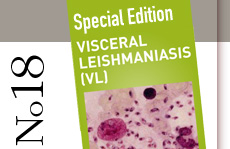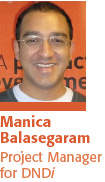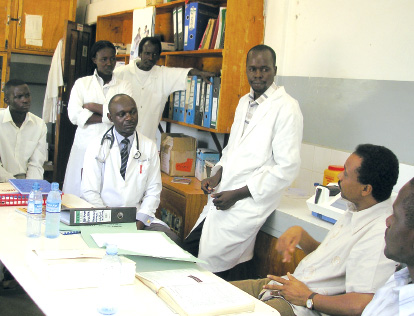 |
|
|
|
|


VL is prevalent in several East African countries including Sudan, Ethiopia, Kenya, Uganda, Somalia and Eritrea, particularly affecting rural communities. While the severity of the disease may differ from one country to another, the entire region is prone to epidemics. The majority of VL patients (over 60%) are children. Patients also suffer from tuberculosis, malaria, malnutrition or HIV/AIDS. Many live in harsh, isolated environments with limited access to good healthcare infrastructure, and are not diagnosed until the disease is already very advanced with a lot of comorbidities. Anecdotally, many doctors feel that the severity is not just due to late consultation but also to the vulnerability of patients (e.g. from malnutrition) and the ‘aggressiveness’ of the parasite.
By and large, VL is still treated in East Africa with antimonials (either sodium stibogluconate or glucantime) which have several drawbacks such as toxicity, difficulty of use, and 30-day hospital-based parenteral treatment. Given that there is only limited data on other available drugs such as AmBisome®, DNDi, apart from developing new drugs, is also committed to ‘geographically extending’ the registration of drugs to the region.
DNDi has significant involvement in the region through LEAP, the Leishmaniasis East Africa Platform, a regional clinical research network founded in 2003. LEAP incorporates partners from across the spectrum of clinical research, and disease control organisations. It is currently running six clinical trial sites, and planning others.

Current studies carried out by DNDi and its partners:
• Paromomycin (PM)
(Geographical extension and in combination with SSG, trial ongoing)
Currently in Phase IV clinical development throughout the Indian subcontinent by fellow PDP, Institute for One World Health (iOWH), paromomycin is being studied in parallel with partners of LEAP. The aim is to register paromomycin, evaluate the shorter course combination of PM+SSG as an alternative treatment for VL and to have the latter adopted in national treatment guidelines. Early results showed the initial dosage of paromomycin did not work as well in Africa as it did in India. To improve the efficacy of PM alone, a dose-finding study was conducted in Sudan. As a result of that study, a PM dose escalation of 20mg/kg/day for 21 days was selected to replace the original PM dose. The observation that the original PM dose showed variable efficacy rates in five study sites has also necessitated an investigation into the variability of the leishmania species causing VL in the region, as well as possible host factors. In 2008, the trial sites continued to recruit patients where infrastructure has been improved or built. The study is due to be completed in 2009, with final results ready by the end of the year.
• Development of AmBisome®
(Geographical extension and potential therapy combinations. Recruitment to start in the second quarter of 2009)
AmBisome®, a liposomal formulation of amphotericin B, manufactured by Gilead, has been used with increasing frequency to treat VL, especially in Europe, over the past decade. Unfortunately, in Africa and Asia, where disease burden is highest, access to AmBisome® is poor because of its high cost. Even with recent preferential pricing offered by the manufacturer, for a patient of 35 kg, a full course with a total dose of 20 mg/kg still costs U.S.$ 280. This price is too high for implementation in treatment programmes in developing countries. Yet, combination therapy with another drug could bring the price per treatment down and could become economically feasible for treatment, even in resource-poor countries. The goal of this project, therefore, is to determine the minimum dose of AmBisome® that is efficacious, safe, and cost effective in the treatment of VL in Africa, to reduce the length of hospital stay required, to facilitate registration and adoption of AmBisome® in the region, and its use in combination therapy. In Ethiopa, DNDi has recently received approval from both the national ethics committee and from the regulatory authority and the study will start soon.
• Miltefosine
(Geographical extension planned)
Miltefosine, a drug originally developed for the treatment of cancer, is one of the few oral drugs effective against leishmania. It is registered and used in India and some countries in Latin America. DNDi and LEAP will be studying miltefosine in late 2009 with the ultimate aim of including it as part of a shortcourse combination therapy for the region.